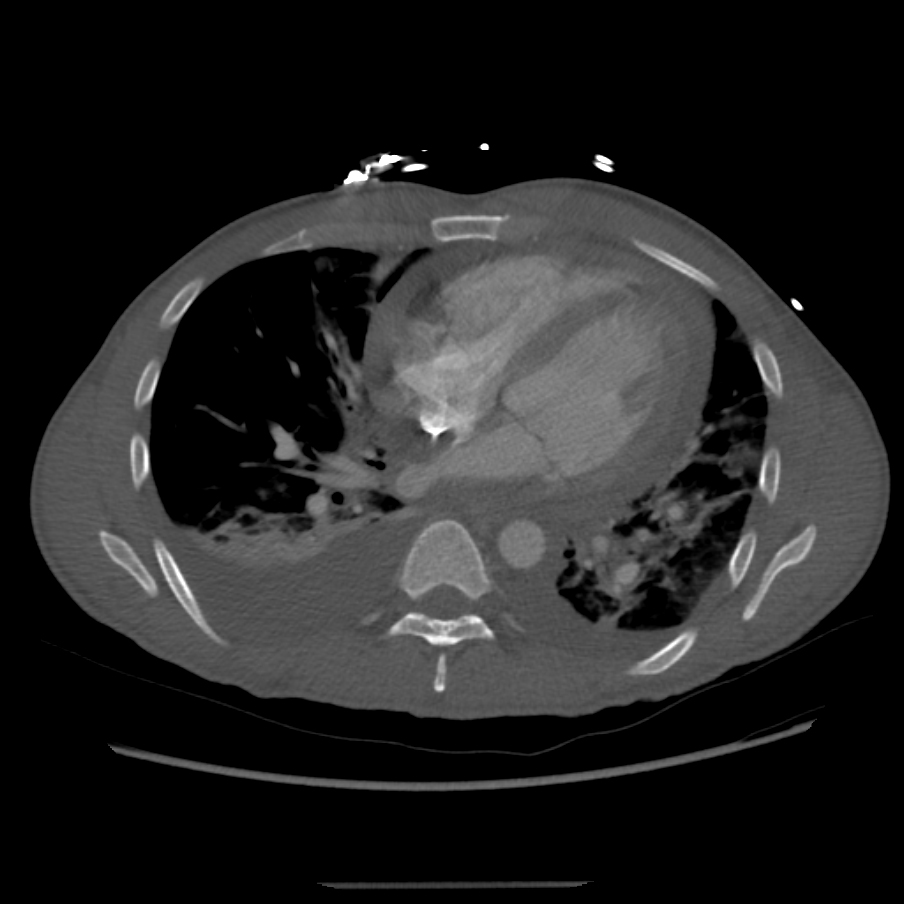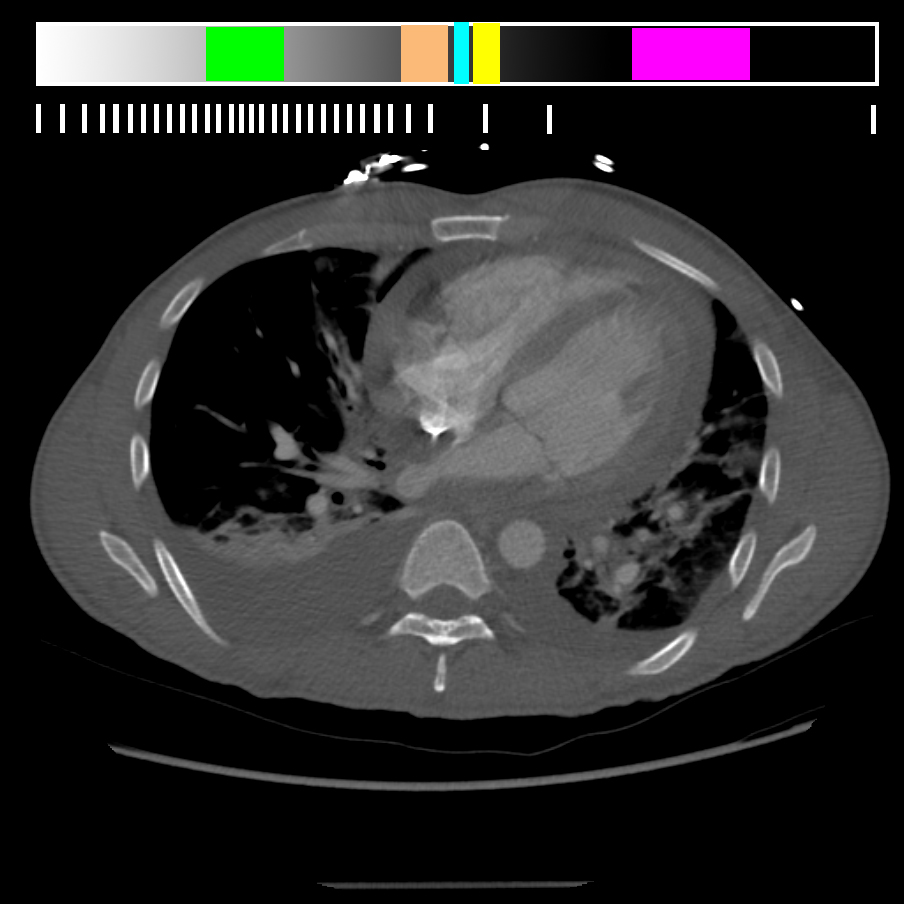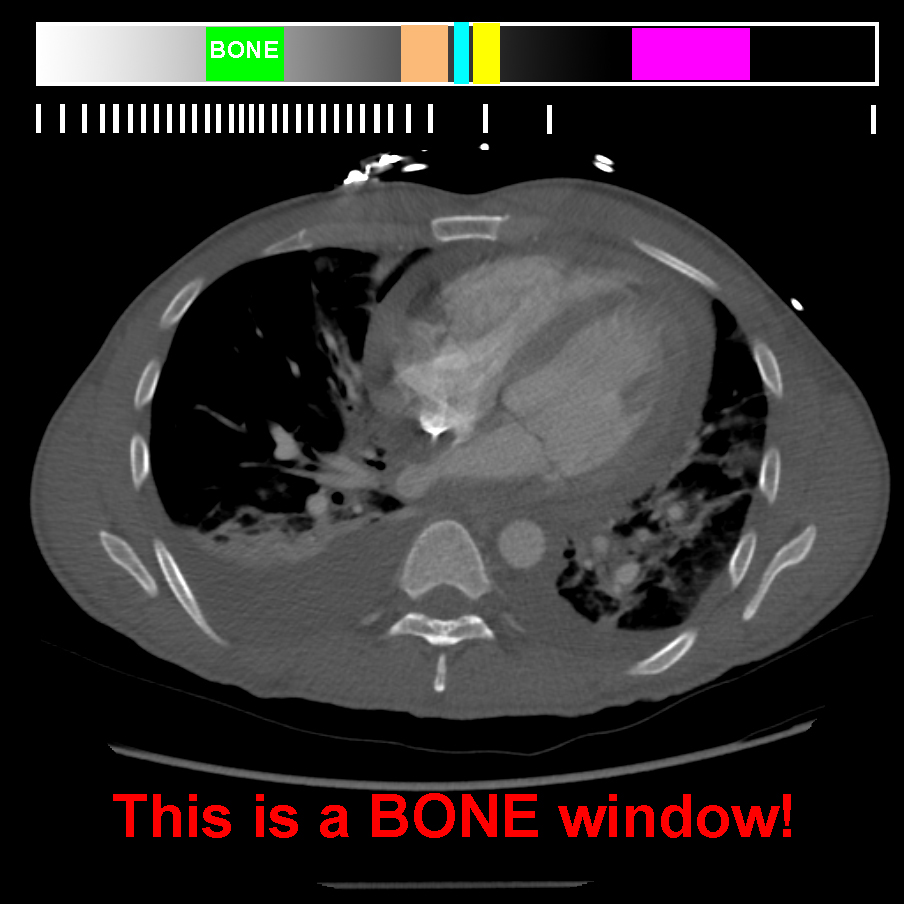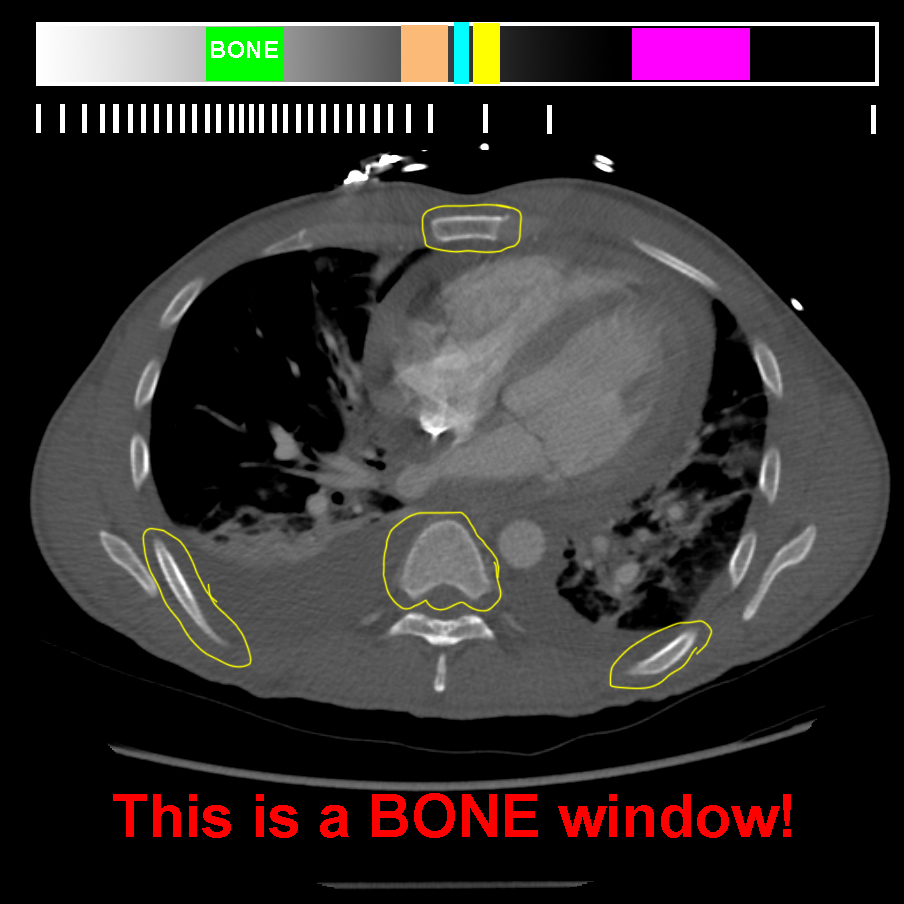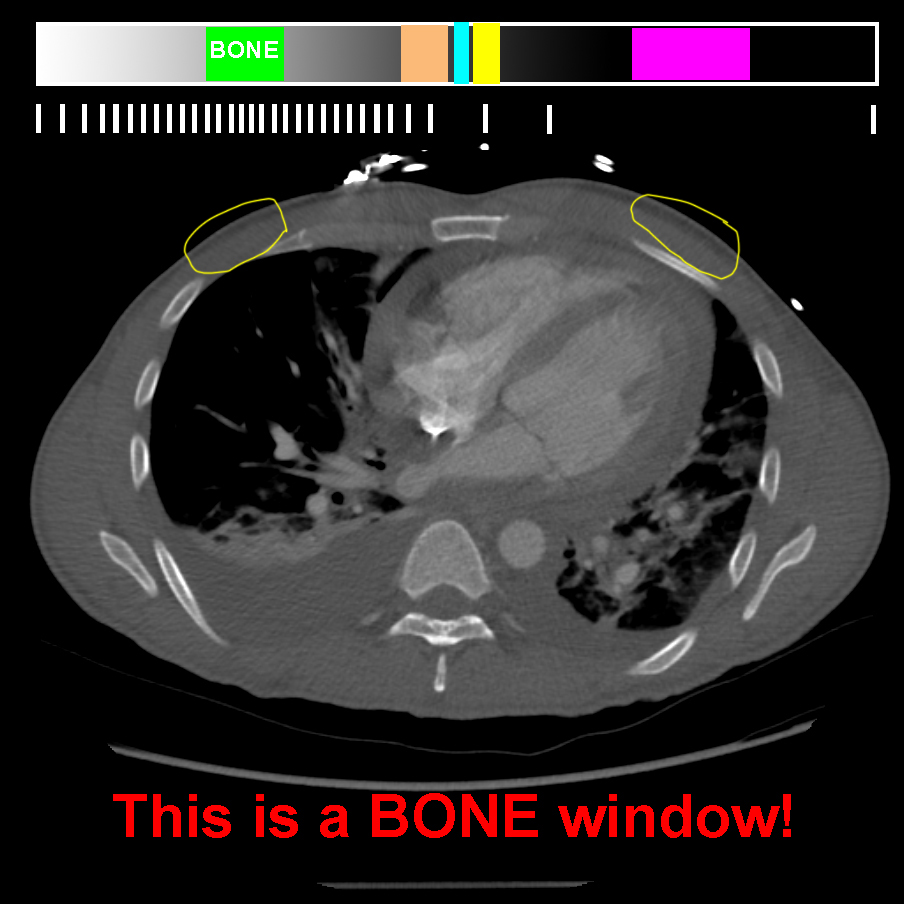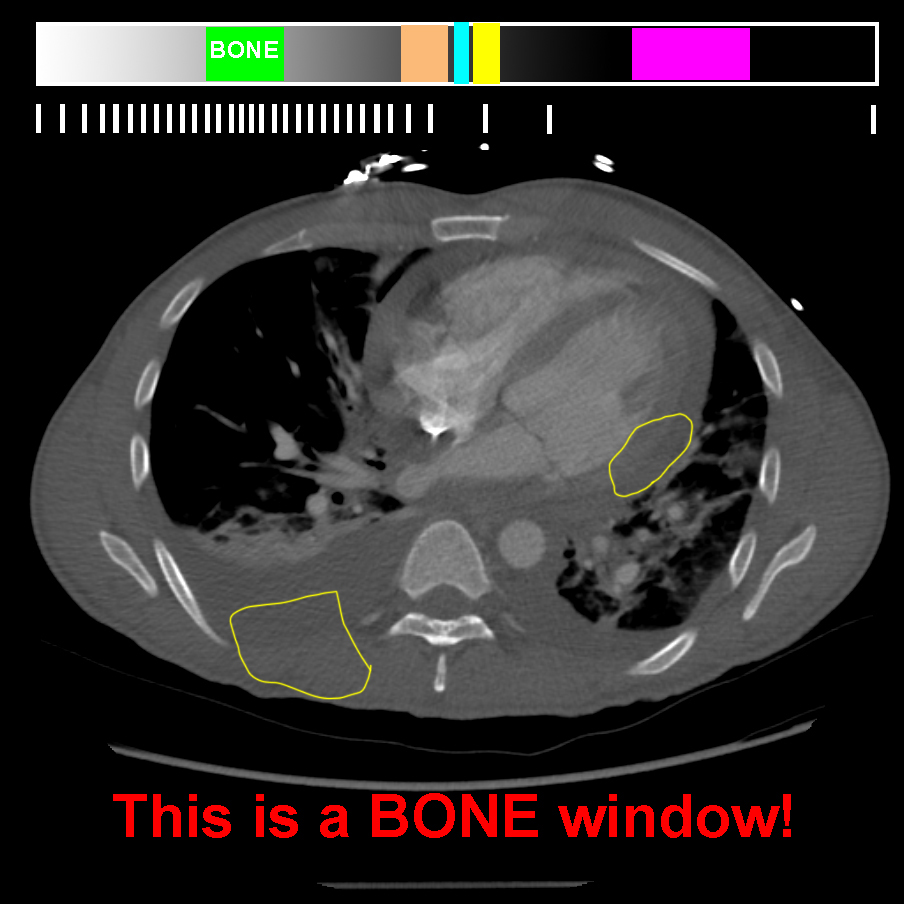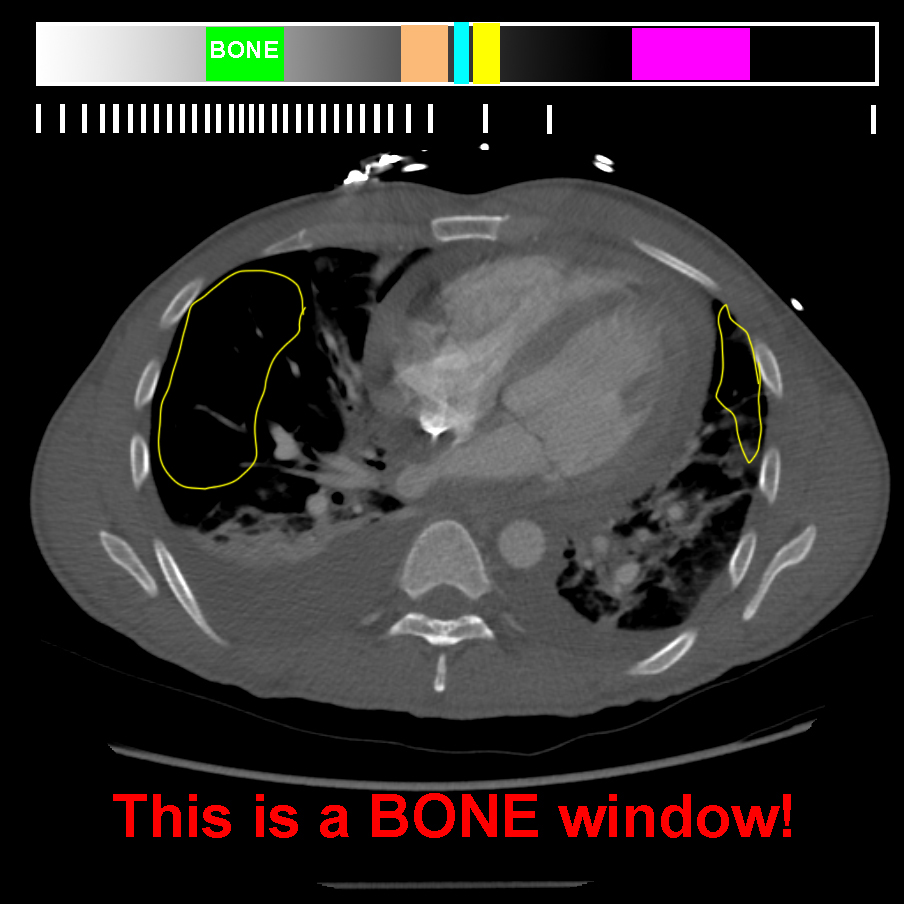
















Common CT windows
CT window example 1--decide whether you think this is a LUNG window, a SOFT TISSUE window or a BONE WINDOW.
Question 1:
a) What tissues do you see well?
The lungs are clearly depicted on this axial CT image in lower lung region. You can see tiny branching vessels on the patient's right (left side of the image), and some bronchi in longitudinal and cross-sectional views. You can see a fissure on the right.
b) What tissues do you NOT see well?
The heart is seen, but details of the mediastinum and chest wall are not very clear, as all of the tissues are similar in terms of shades of grey. It is harder than usual to see bones, and contrast material on this window.
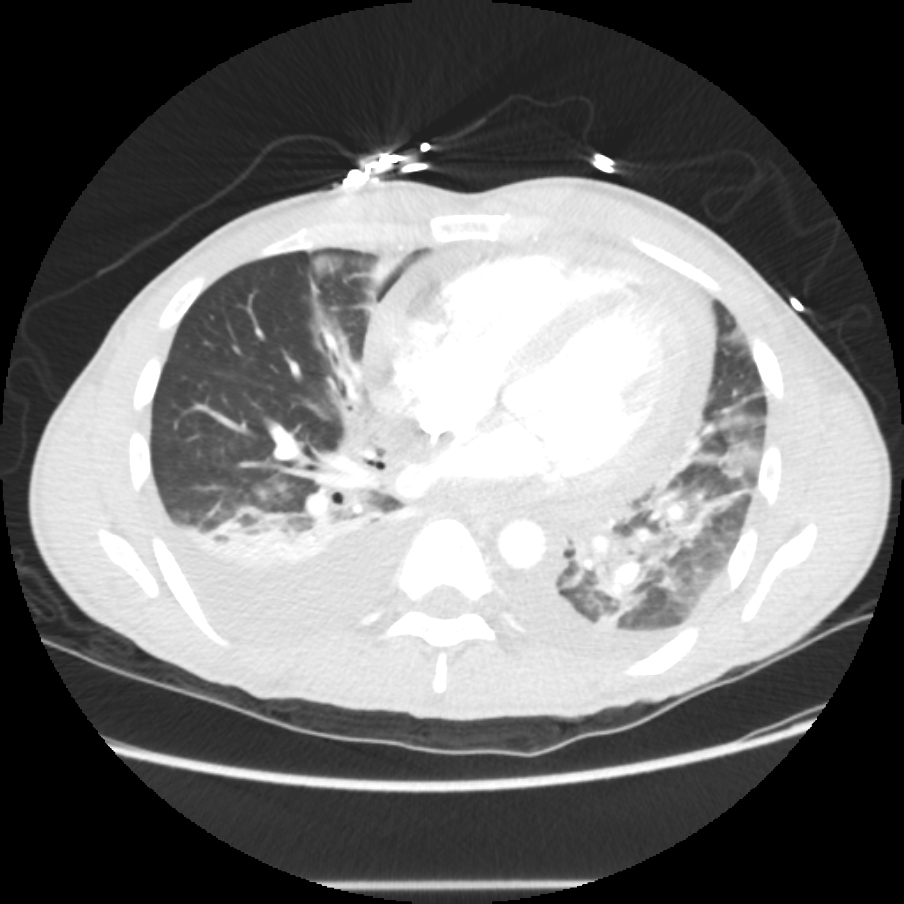
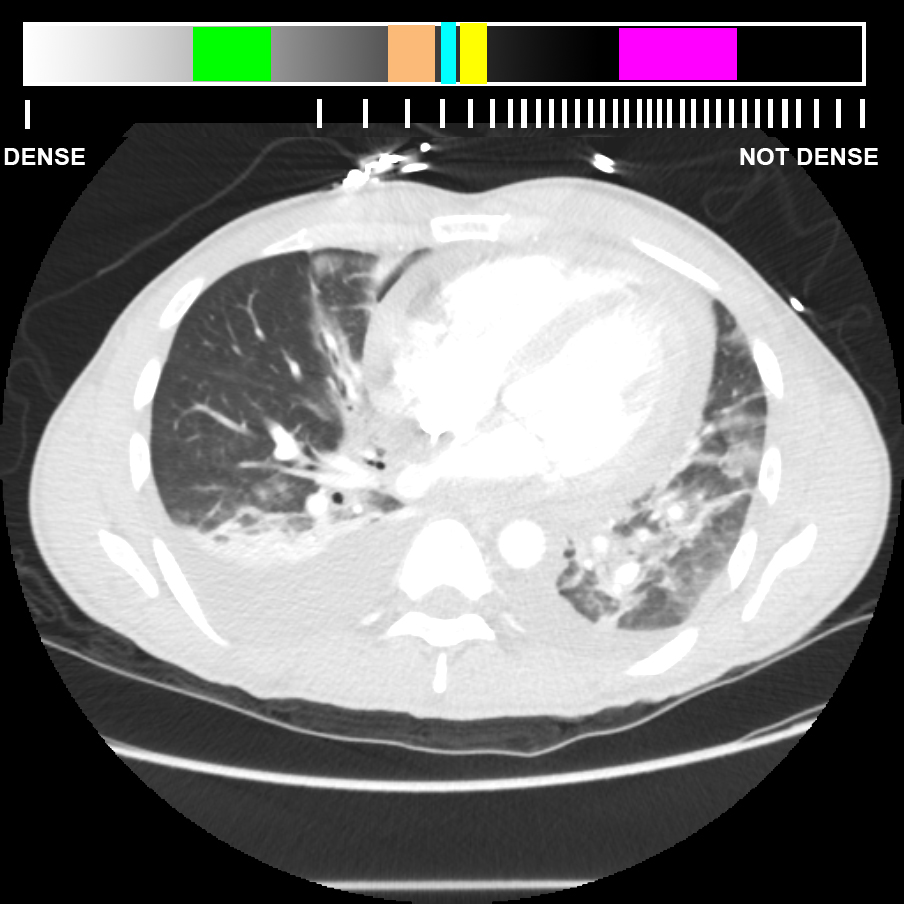
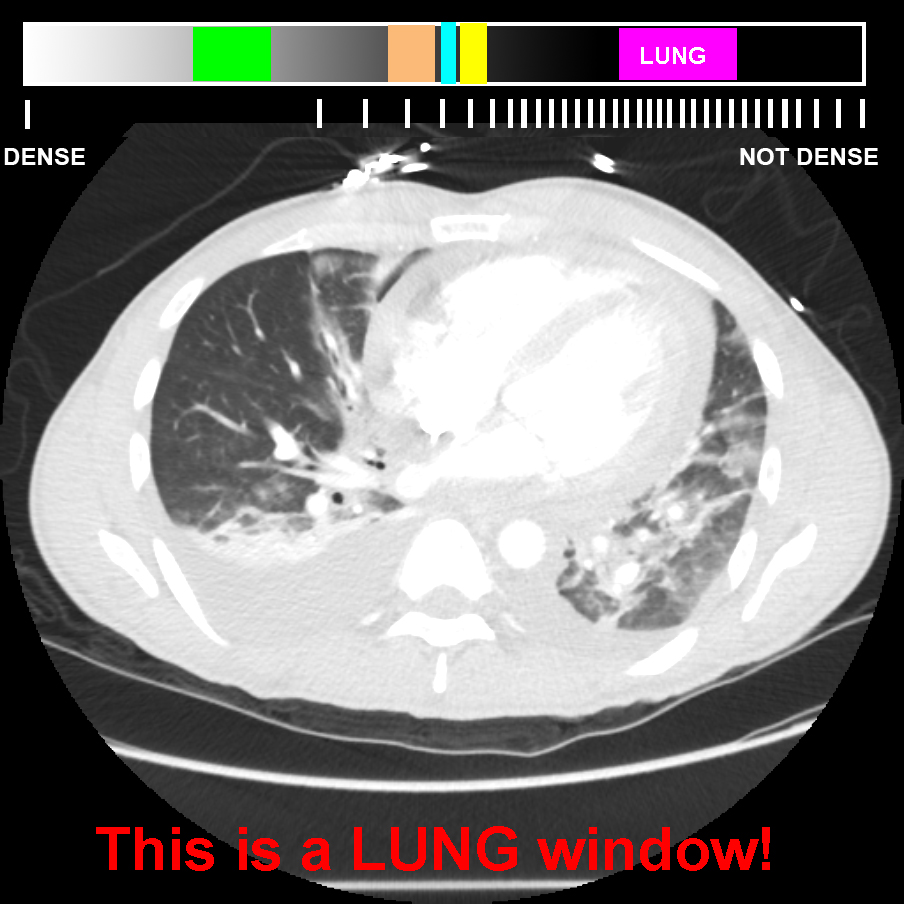
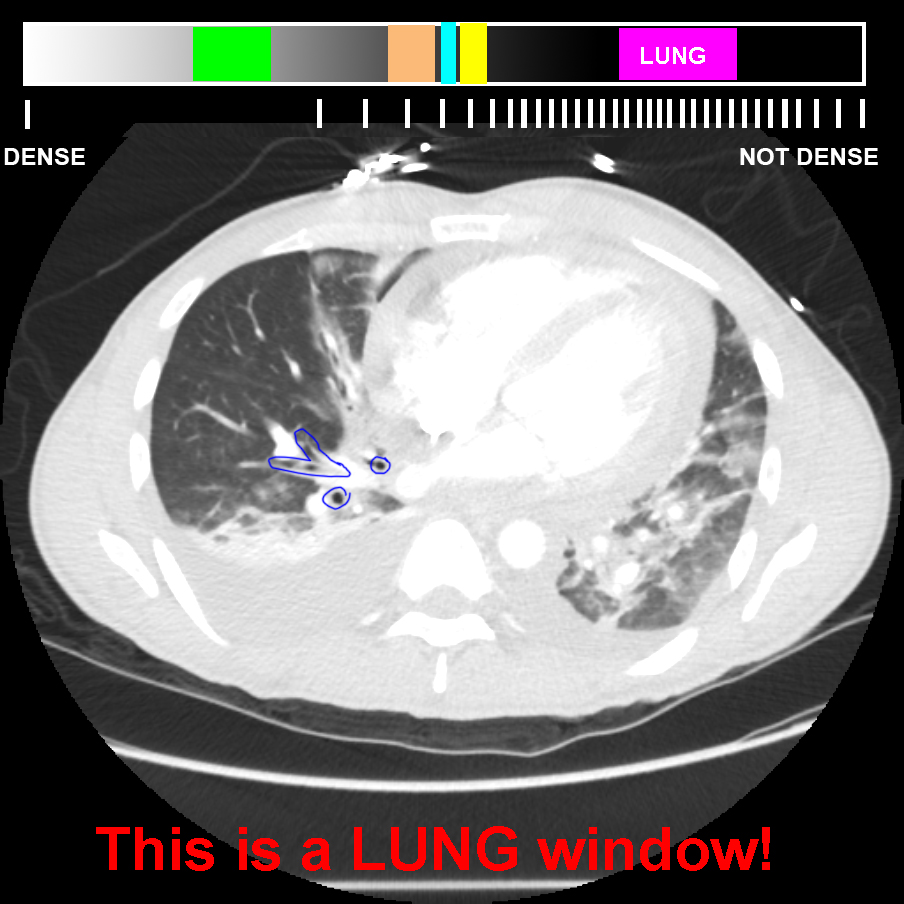
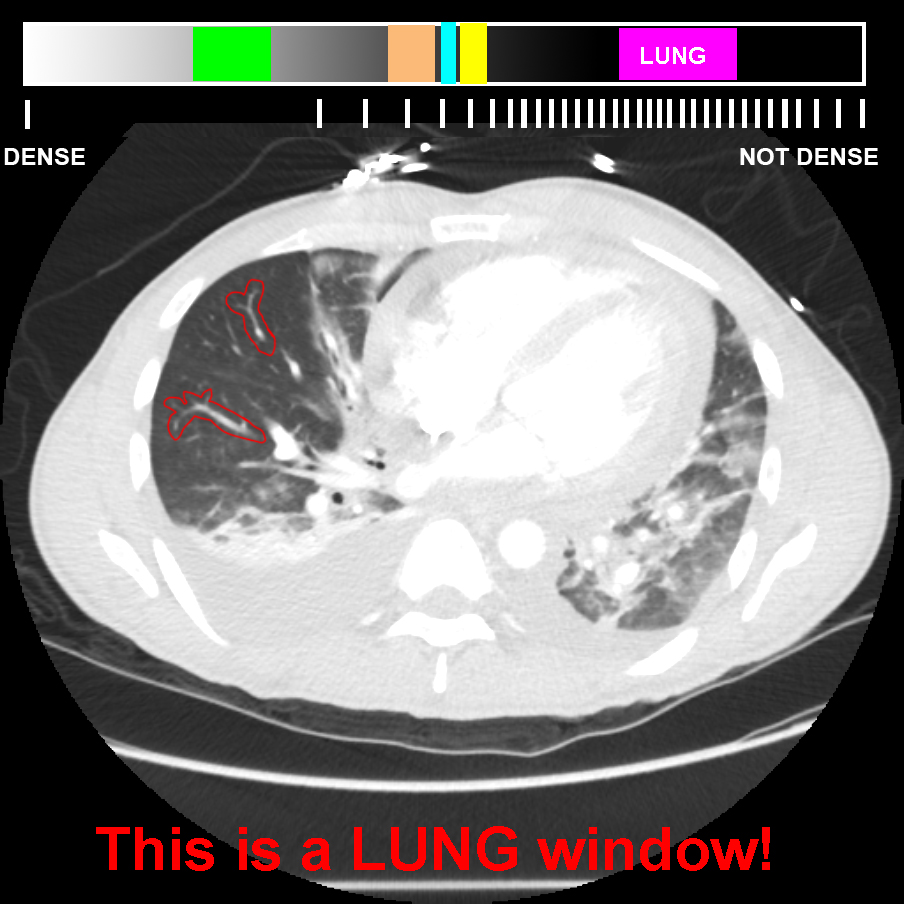
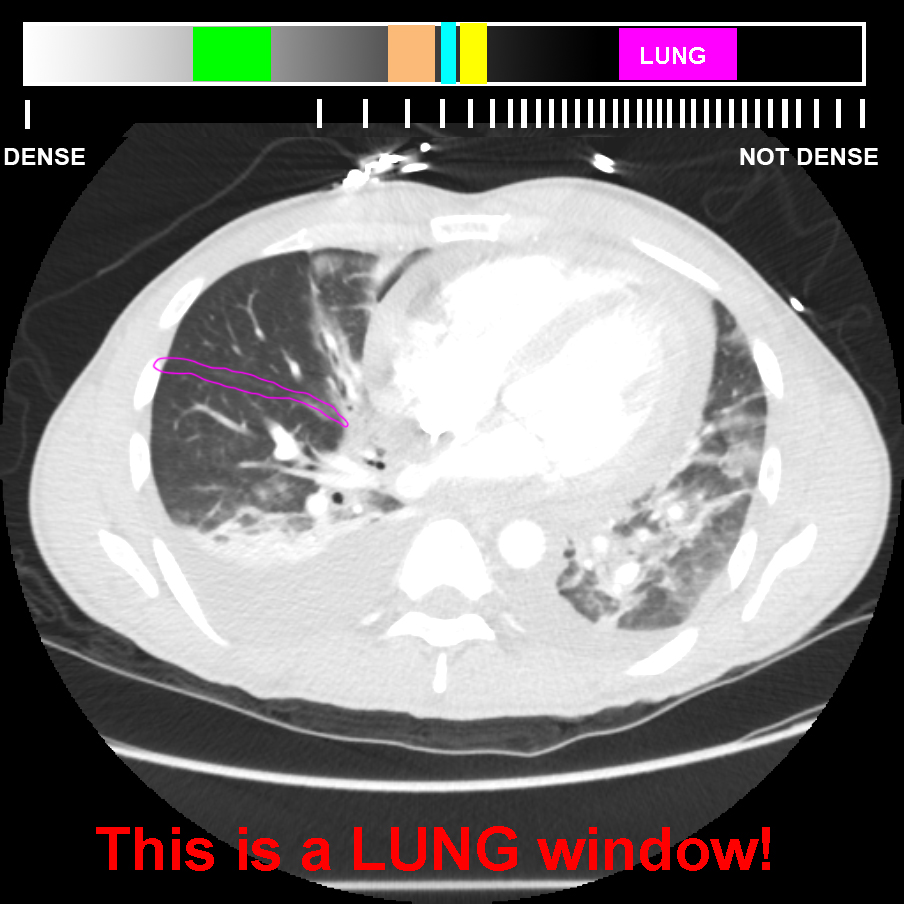
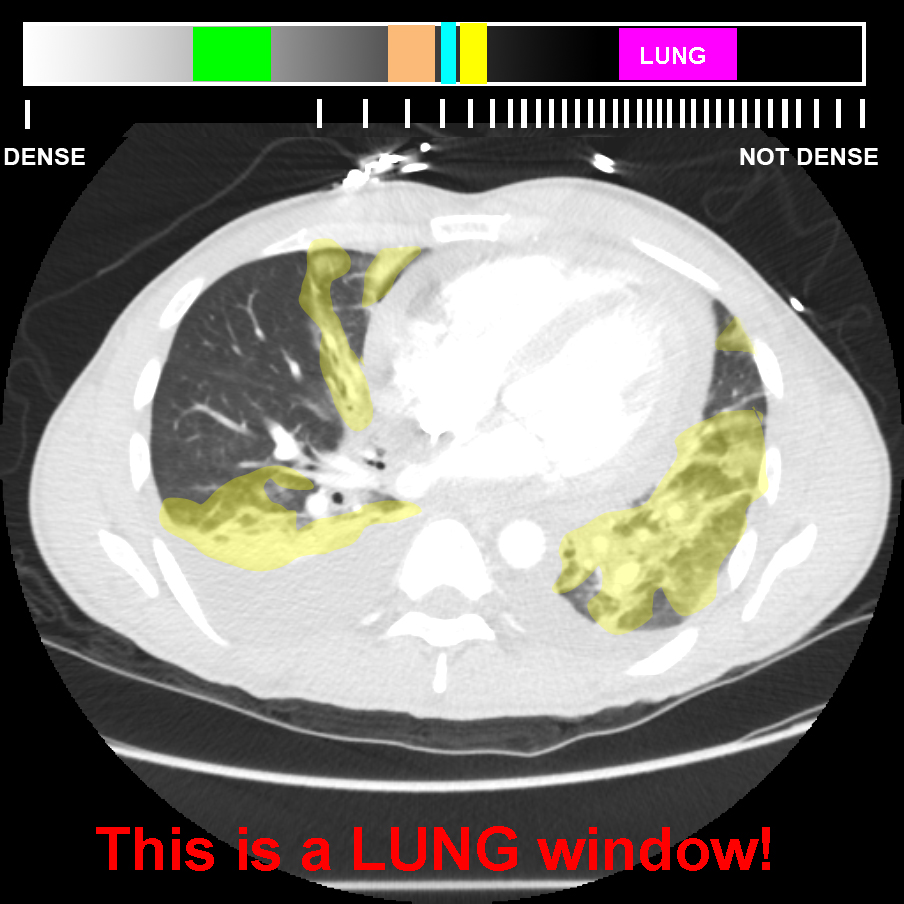
Common CT windows
CT window example 1--decide whether you think this is a LUNG window, a SOFT TISSUE window or a BONE WINDOW.
Question 2:
a) What tissues do you see well?
This is the commonest window for imaging the abdomen and pelvis, and is also commonly used in the chest to optimize the view of structures in the mediastinum. If you look at the chest wall in this patient, you will see that it is very easy to distinguish fat from muscle density, even though this young and muscular patient has very little subcutaneous fat. IV contrast is easy to detect, even when it is not very concentrated (although it is very bright in this scan, performed in the arterial phase, so the contrast in heart and aorta are easy to see on all windows). Another thing that is easy to see on this window is fluid. This patient has both pleural and pericardial fluid, and when you compare the shade of grey of the fluid to adjacent muscle (chest wall muscle or myocardium) you can see a subtle difference in grey level that would be much harder to see on other windows.
b) That tissues do you NOT see well?
The lungs look very dark, and only the largest vessels show up well on this window. The bones look very white, and it is impossible to see medullary cavity and trabecular bone detail in many of the ribs.
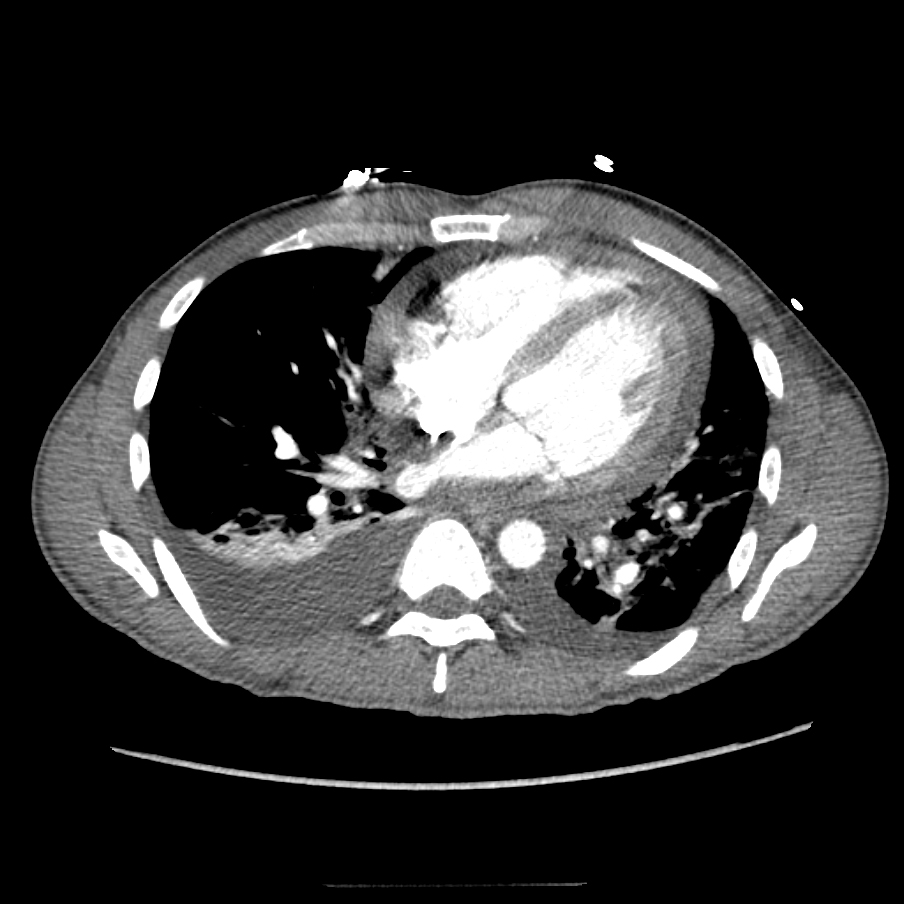

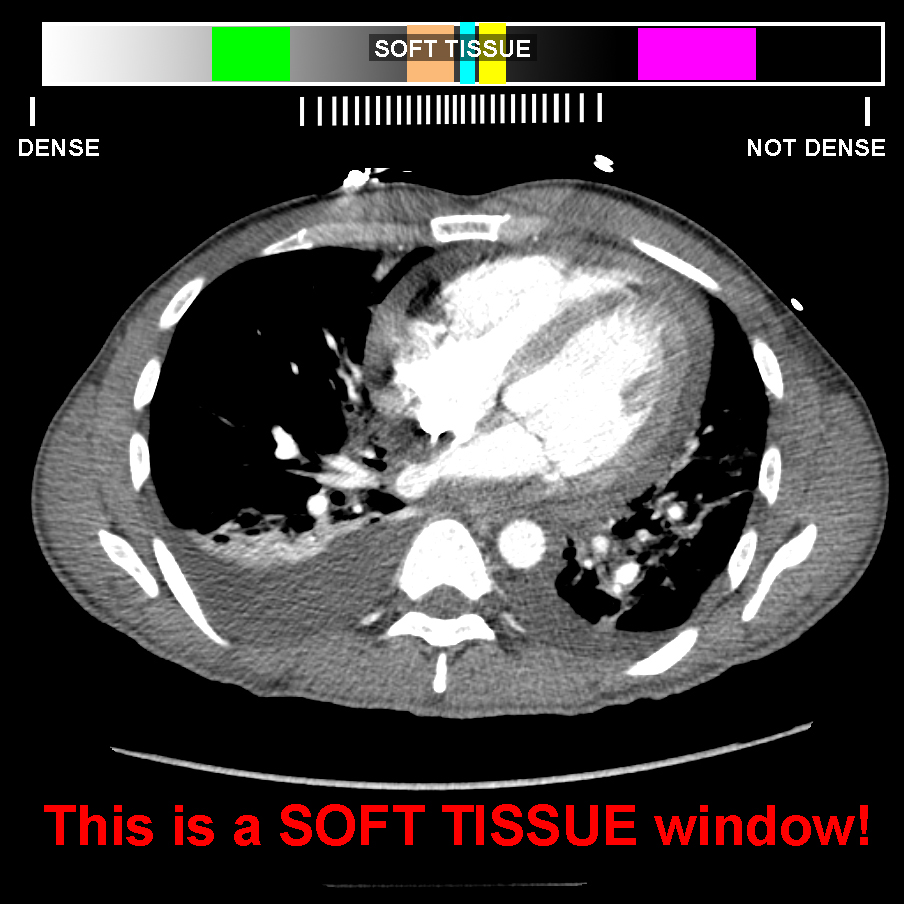
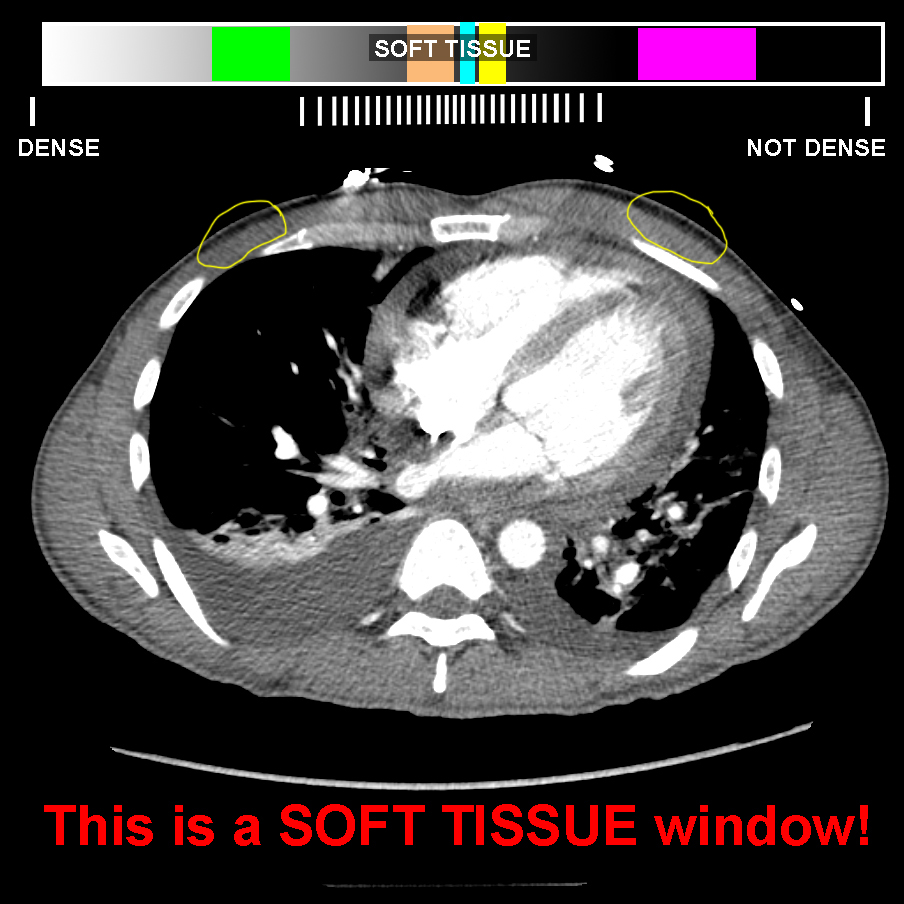
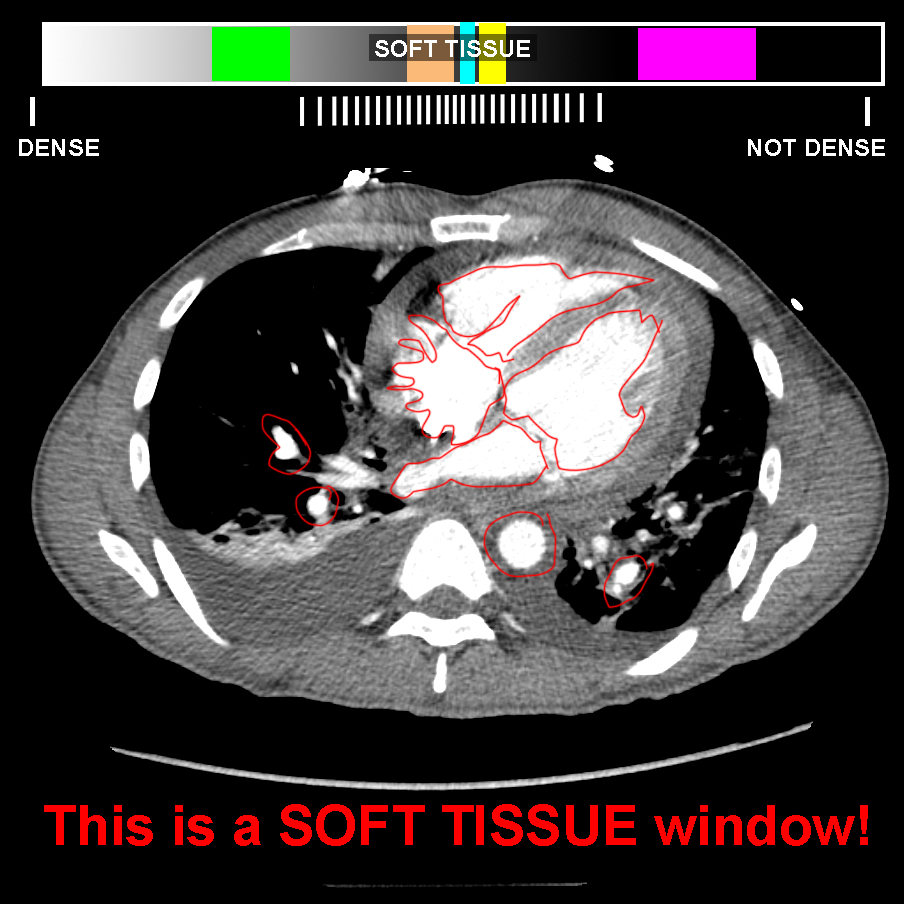

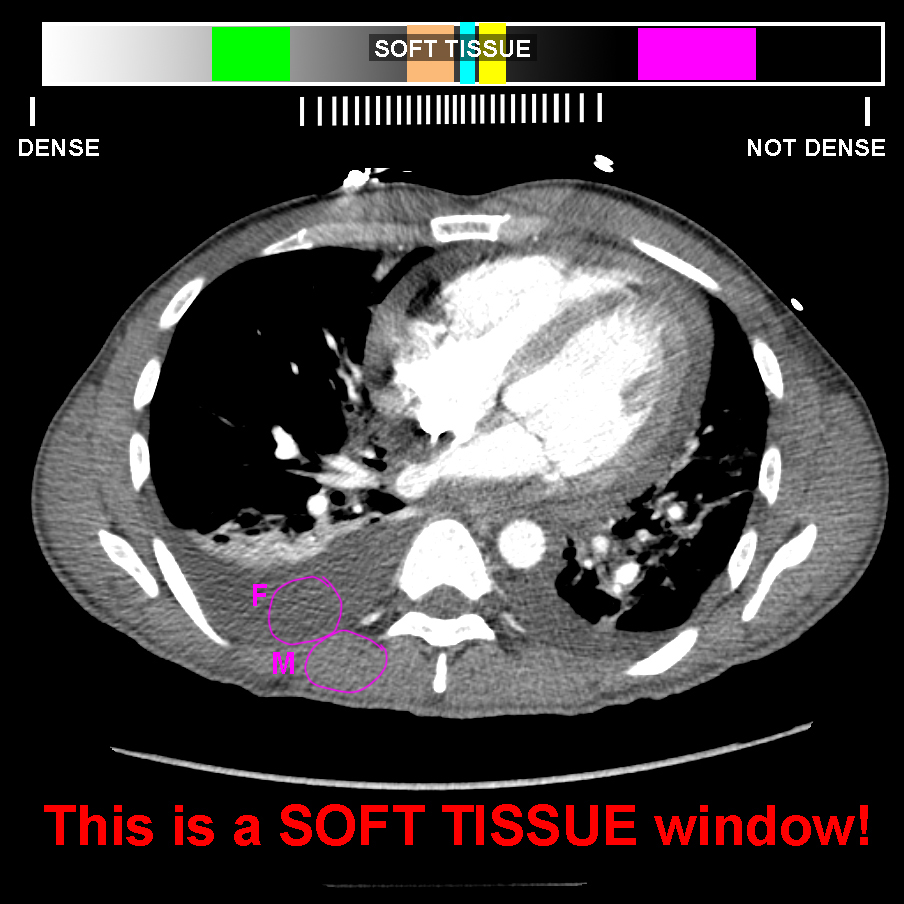
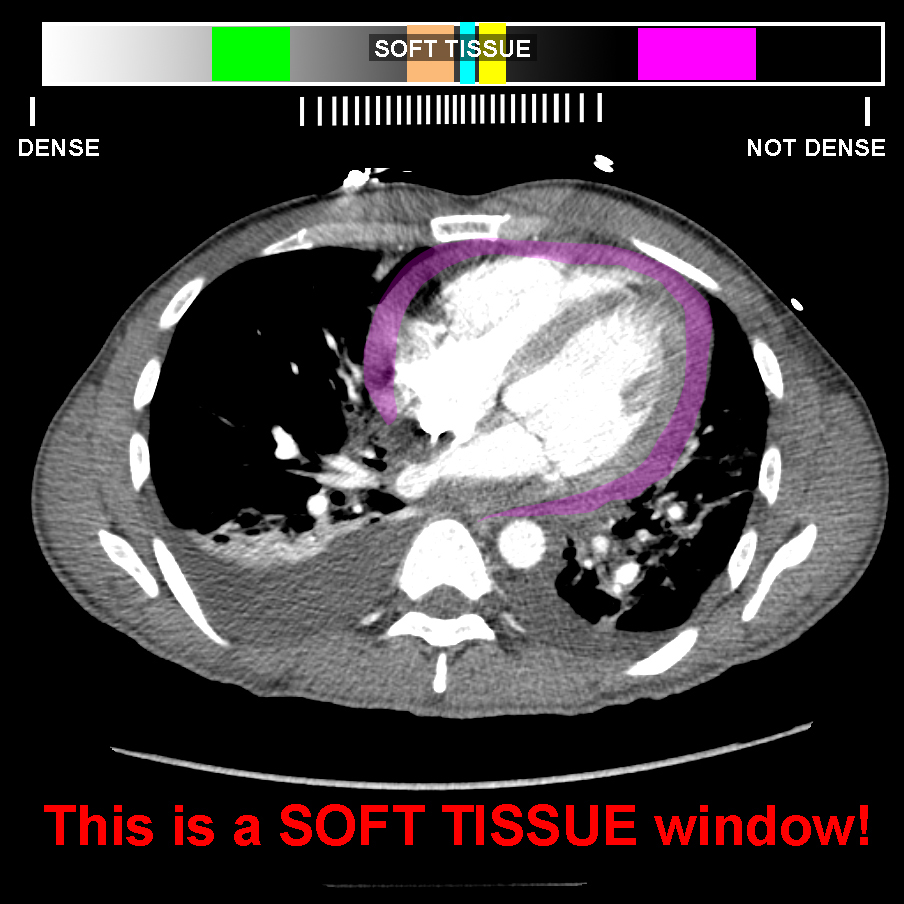
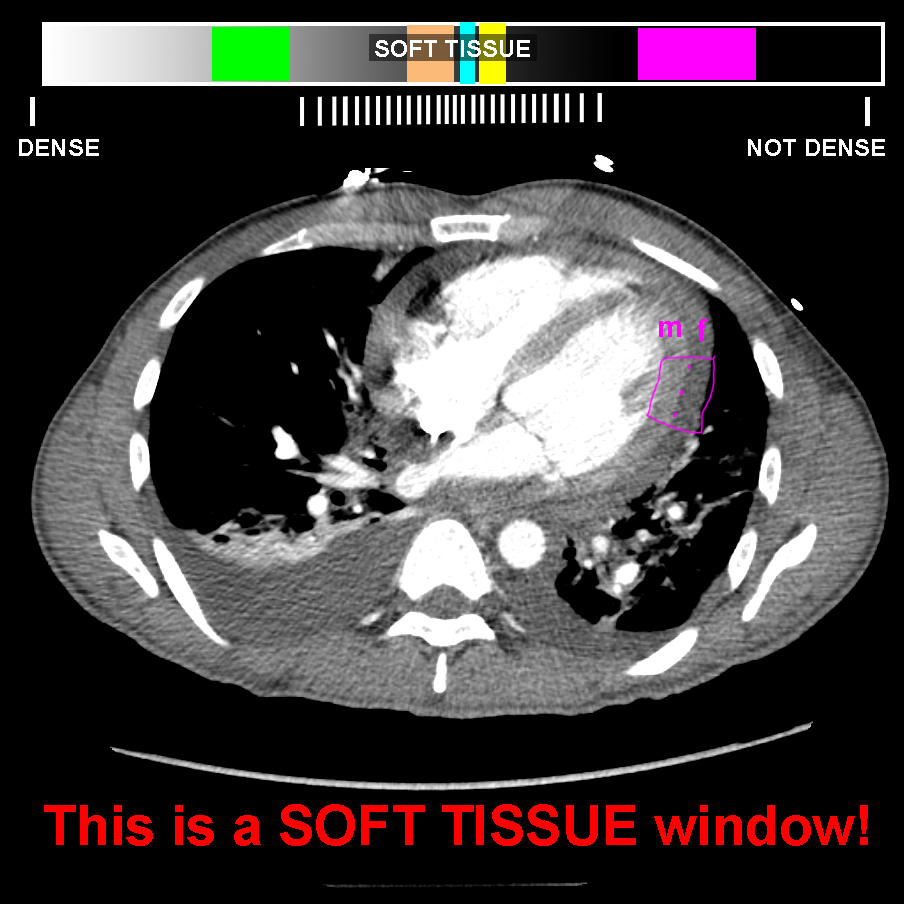
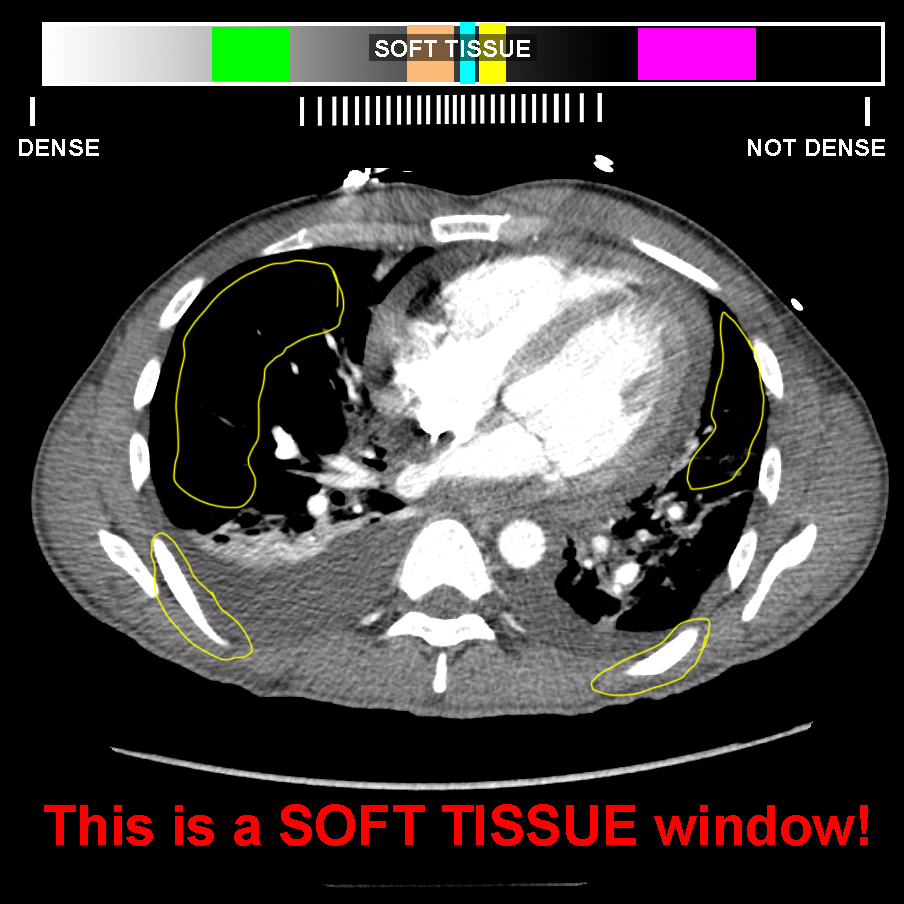
Common CT windows
CT window example 1--decide whether you think this is a LUNG window, a SOFT TISSUE window or a BONE WINDOW.
Question 3:
a) What tissues to you see well?
This window shows the distinction between cortical bone and medullary bone, including details of trabeculae that criss-cross the medullary cavity. You can see a separate medullary cavity in all of the ribs, and even the lowest parts of the scapula, as well as in the thoracic vertebral body.
b) What tissues do you NOT see well?
This window is not very informative about soft tissues or lungs, and fine distinctions like fat vs muscle, or muscle vs fluid will be much harder to see.
